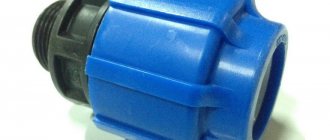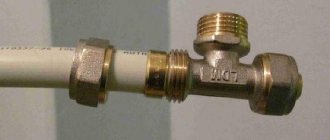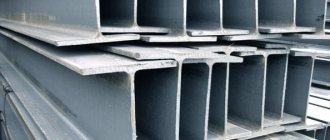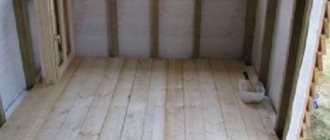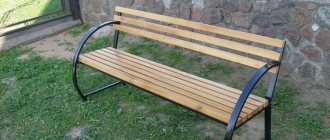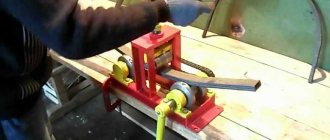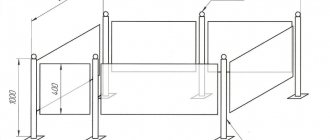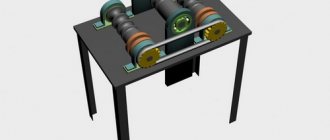When installing and replacing utility networks, connecting or replacing equipment in a private house or city apartment, problems arise with joining pipes made of dissimilar materials. The transition will be as reliable as connecting identical pipes if the work is carried out correctly using one of the methods recommended by experts. The most common transition option is the transition of a steel pipe and a polypropylene pipe. Let's talk about how to implement it.
How to make the transition when replacing pipes from metal to polypropylene?
With the advent of plastic pipes on the market, they gradually began to be used everywhere.
But old steel pipes are still used in many buildings today. For example, in older houses, plumbing and heating systems are made of steel pipes. Therefore, the question of connecting dissimilar pipes very often arises when replacing pipes in apartments. In this case, it is often necessary to connect old cast iron pipes with polypropylene pipes. To do this correctly, it is important to understand the differences in the structure and technical characteristics of metal and propylene pipes.
When is it needed?
Here are the most common cases of connecting operations.
Replacement of water supply
Major renovation of housing in an apartment building involves the replacement and repair of sections of the water supply system, limited to the territory of the owner. Polypropylene looks more aesthetically pleasing and modern, and in old houses, where iron in plumbing networks “the old fashioned way” pleases the eye, apartment owners everywhere decide to replace pipes. Even if it is expensive to completely replace the metal part of the riser belonging to the apartment, the outlets to the consumer devices are in any case made using polypropylene.
Emergency repairs
If an emergency situation arises when repairing a burst pipe in the basement, the damaged area is replaced in most cases with plastic, since steel pipes are more expensive and heavier, and the procedures for eliminating the accident are more labor-intensive.
Radiator replacement
When replacing an old cast-iron battery with a modern steel or bimetallic radiator, you will have to switch from metal to polypropylene if plastic pipes are used in the heating system.
Replacing a heated towel rail
Installing a heated towel rail in the bathroom also involves connecting an iron pipe to a polypropylene pipe if the hot water supply is made of plastic.
Differences between metal and propylene pipes
Metal pipes are usually made of cast iron or steel, less often - aluminum or copper.
Cast iron pipes are not reliable connections; the material is quite fragile. High-strength cast iron, which began to be produced relatively recently, can be distinguished; it has higher impact resistance, but it does not exceed the performance of steel pipes.
Steel is a stronger material, but pipes made from it corrode and become clogged over time due to the fact that dirt constantly accumulates on their walls and various impurities settle.
Although stainless steel is much stronger and lasts a long time, it is difficult to process, which is why the price of such products is high. Galvanized steel resists corrosion, but pipes made from it are very difficult to install.
Compared to metal pipes, polypropylene pipes are lighter in weight and easier to transport and install. Therefore, they are deservedly popular among home craftsmen.
The choice of polypropylene is determined not only by its high technical characteristics, but also by the fact that there are many types and types of pipes for installation, differing in diameter, structure and a wide variety of fittings. Thus, it is easy to find components of any configuration for replacement.
But, perhaps, the only drawback of polypropylene pipes is the inability to withstand very high temperatures, the limit is usually +80°, and low temperatures also have a destructive effect on it. Therefore, laying polypropylene pipes outdoors is recommended only underground.
Reasons for connecting pipes made of different materials
Today, the connection of a polypropylene pipe with a metal pipe can be found mainly in three cases:
- construction. It is no secret that when constructing a new building, different organizations are involved in solving various problems. Thus, the installation of the heating main can be carried out by one contractor, and the laying of sewer wells by another. It is not a fact that both performers will choose pipes made of the same material;
- planned replacement. Over time, pipelines and risers in houses are replaced with new ones, as the old ones become unusable. Of course, in this case, it is much easier to locally connect a metal and propylene pipe than to move the entire house and put it under major repairs;
- Maintenance. Quite often in old houses, breakdowns of old metal pipes occur. I doubt that the housing office or the owner of the house is ready to spend a lot of time looking for cast iron pipes; it will be much easier to replace the damaged structure with a modern polypropylene one;
- private repair. Here we are talking about the personal initiative of the apartment owner. Very often, with such a local replacement, a metal pipe from neighbors is connected to a polypropylene pipe.
It is worth saying that the choice of a plastic pipe may not always be correct. If a pipe located under an active piece of land or roadway breaks down, replacing it with a plastic one will only bring big trouble. Thus, a soft structure under the influence of constant pressure will soon become unusable.
Properties and scope of application of metal-plastic pipes
The most common types of pipes are plastic or metal. Each of them has its own pros and cons. Metal pipes are more resistant to mechanical stress, less susceptible to adhesion, but lack the property of corrosion resistance. You can, of course, use copper communications, but such material is very expensive. Plastic, in turn, is resistant to corrosion, and its price is much lower than its metal “counterpart”. But less resistance to external damage.
Taking into account the advantages of the two types of pipes, engineers created a metal-plastic structure. This is a kind of smooth transition from metal to plastic. The design of the product is very simple: an aluminum tube is coated inside and outside with polyethylene. Combining the advantages of two materials, this type of design has acquired the following advantages.
The inside of the product is very smooth, which prevents various impurities present in the water from settling on the inner walls of the water supply. Both the inner and outer layers of plastic prevent the appearance of condensation on the metal part, so aluminum is protected from oxidation and exposure to external “irritants”. The properties of aluminum do not affect the resistance to internal pressure and thermal characteristics of the product, therefore the characteristics of the pipes are primarily determined by the properties of the plastic used.
The task of the metal layer is to compensate for expansion due to heating, as well as to eliminate oxygen diffusion. The absence of diffusion allows the material to be used in the manufacture of heating systems; otherwise, heating boilers, radiators and pumps would be subject to negative oxygen effects.
In the production of MP products, a special glue is used, the composition of which is kept secret by manufacturers. This composition glues the plastic and metal layers into one whole. But it is the glue layer that becomes the “Achilles heel” of such pipes. Over time, the adhesive layer may lose its elasticity, resulting in delamination of the pipe and leakage in the places where the connection was made. Also, such a breakdown can occur as a result of a sudden change in temperature, for example, after cold water passes through a water supply system immediately after hot water. In such situations, the plastic layer simply does not have time to take on a new shape after the metal layer.
Despite the presence of aluminum in their design, metal-polymer products are quite flexible. This parameter is achieved by reducing the thickness of the metal layer, and this does not in any way affect the versatility of the material. But when bending, you need to be extremely careful, because the metal layer can simply burst at the bend.
Based on all the described properties, the metal-plastic pipe can be used in almost all areas of use. MP type communications can be found in hot and cold water supply; with their help, various heating systems are created. In addition, resistance to aggressive chemical liquids allows the pipes to be used in various production plants.
Summing up
As can be seen from the above, the installation procedure in both ways is quite simple. First of all, it is important to pay attention to the correspondence of the sizes of pipes and joint elements. You should also carefully inspect all elements for flaws, cracks and burrs. Any damage will negatively affect the reliability of the structure, resulting in the need to re-repair the water supply after some time.
And the last point is to strictly follow the instructions. All work must be done step by step, without neglecting the stages and following the recommendations. Particular attention should be paid to sealing agents, and in no case should you forget about them, since they are an important component of the entire plumbing structure. You shouldn’t apply them in large quantities either – the pipes won’t thank you for it.
When is it necessary to combine propylene with metal?
The need for heterogeneous pipe connections arises when repairing old metal pipelines or replacing them with more modern elements.
Sometimes completely replacing steel pipes with plastic ones is not a cheap undertaking, and craftsmen undertake a partial replacement.
In some cases, and when laying completely new systems, pipes from different materials are used when laying communications. This is often due to economic reasons and practicality.
If the pipeline runs under driveways or parking spaces, the soil experiences a lot of pressure, the load can be transferred to underground utilities, so it is recommended to use metal pipes in such places, but it is not practical to make the rest of the system metal.
Metal and polypropylene are also combined in places where pipes are attached to equipment that has critical temperature values for plastic. Often, metal leads of various equipment are connected to PP pipes.
There are situations when it is necessary to connect metal pipes with polypropylene, caused by emergency situations.
Flange connections
This method is based on joining a steel pipe and a plastic insert with a detachable device - a flange. A flange in the form of a sleeve is inserted into the metal pipe, and a slip-on flange with a transition to plastic is attached to it using bolts. This is done as follows:
- The insertion location is determined and a neat cut of the pipe is made. Irregularities at the cut site must be processed with a grinder.
- The flange in the form of a sleeve is inspected, sharp edges are smoothed with a file. This precaution will protect the plastic pipe from damage. Only after this the flange is installed in place.
- Another flange with an adapter for polypropylene pipes is bolted to it. A rubber gasket is installed at the connection point. The mounting bolts are tightened without unnecessary effort.
Any person can make pipe connections from different materials. But if you are not sure that you can do the job efficiently, it is better to contact a plumber.
How to connect polypropylene pipes with metal-plastic pipes?
It is not possible to connect plastic pipes with metal-plastic pipes directly; I personally have not seen a transition from a plastic pipe to a metal-plastic pipe, and their fittings and connectors are completely different. Some are soldered, others are screwed on, and others are clamped:
Therefore, it will be possible to connect them by connecting to the thread, that is, for example, you need to solder a fitting with an external thread onto a polypropylene pipe, and clamp it onto a metal-plastic pipe of the appropriate diameter with an internal thread.
If it is not possible to rotate the pipe, then the transition will need to be made with a union nut or an American-style flat connection.
But the point of the connection is to reach the thread, which will connect pipes of different types!
The principle of connection is this - you need to find two fittings, one for a polypropylene pipe, the other for a metal-plastic pipe, but the most important thing is that these fittings have the same threads, with only one difference - one fitting must have a “female” connection with an internal thread , and the second connection has a “male” type with an external thread, so that later they can be connected to each other.
But in this case the pipes will stand tightly and their further separation in this place will be problematic. To prevent this from happening, it is necessary to install a compression fitting; it not only smoothes out the physical changes in the pipe, but can also be quickly disconnected if necessary.
Methodology for performing the transition
In any engineering systems, both domestic and industrial, sooner or later the use of technologies for joining different types of pipes is required. They differ in the labor intensity of the process, the availability of professional skills, and the availability of special tools. Despite the significant differences in the physical and chemical properties of steel and polypropylene, there are several options for connecting pipes made of iron and plastic materials.
Threaded transition from iron to polypropylene
The method is used when it comes to manipulating pipes with a diameter of no more than 40 mm. The key element when making a connection are fittings. On one side, the pipe adapter has a thread for a metal end, on the other, a regular hollow hole for soldering with polypropylene. Naturally, the fittings differ:
- by diameter (15, 20, 25 mm, etc.);
- by thread position (internal or external);
- by the number of bends (tee, cross);
- according to the angle of withdrawal (45 0,90 0).
The variety of fittings for threaded connection of a metal pipe with a polypropylene pipe is so great that it can be used in pipeline diagrams of any complexity with any number of turns, branches, etc.
To carry out docking, in addition to adapters, the following are used:
- tools: pipe cutter, polypropylene scissors, plumbing soldering iron, die or tap;
- lubricant for pipe aphids, sealing materials: sealant paste, fum tape, tow.
Scheme of work:
- The end of the steel pipe is lubricated and the thread is made: external with a die, internal with a tap.
- The adapter is screwed onto the thread, which is pre-lubricated with a sealing compound. For tightness, fum tape and sanitary linen are also used.
- Using a plumber's curling iron, the polypropylene pipe is soldered to the fitting.
- At the end of the section, operations similar to the first three are carried out.
- The strength of the joints is checked empirically. If, when opening the tap, there are leaks at the connections, the work will need to be redone.
Flange connection of dissimilar pipes
The advantages of this technology are strength, reliability, the ability to re-install and dismantle as many times as desired, as well as application in a different temperature range.
Polypropylene and steel pipes have differences in determining diameters. The flange connector allows the connection to compensate for the difference in size as much as possible.
- The iron pipe is cut in the right place. The docking line should be drawn delicately;
- A flange is installed on the pipe.
- A coupling with a flange is also put on the polypropylene pipe.
- The flanges are secured to each other using bolts. The joint is sealed using a silicone or rubber gasket. The bolts must be tightened gradually and evenly. The operation involves a torque wrench.
- To make the structure more tight, you can repeat tightening the bolts after an hour or two.
- Finally, consolidation reliability tests are carried out.
A flange transition from metal to polypropylene is sometimes the only possible technological option when joining pipes with a large cross-section.
How does a metal pipe connect to a plastic pipe?
Metal pipes are usually used for laying underground. Sewage and heating consist almost entirely of metal pipes. Steel material is also popular, but now plastic pipes are being installed. They are cheaper, have good characteristics and you can choose many additional elements for them in the form of fittings and couplings.
In stores you can find a large selection of plastic pipes of different sizes. Plastic is cheap, reliable and that’s why it’s so popular. But if you have metal pipes installed and you want to install a plastic pipe, then it is important to know how to connect a metal pipe to a plastic one. There is also a mixture of these two materials - metal-plastic. Metal-plastic combines both the parameters of metal and the characteristics of plastic pipes.
The choice of method for connecting a metal pipe to a plastic one depends on the diameter of the pipes themselves.
There are two ways to connect a metal pipe and a plastic pipe: the threaded method and the flange method.
The threaded method should be used only in cases where the pipes that you will connect will have a diameter of less than 40 mm. The flange method is used for large diameter pipes. Because tightening threads on such large pipes is simply inconvenient.
Let's draw a conclusion. If you have large metal and plastic pipes, then use the flange connection method. If the diameter of your pipes is less than 40 mm, then you can safely use the threaded method.
Video description
This video shows how to make a fitting connection
Gebo fastener
One of the popular ways to connect pipes without welding and threading is Gebo fasteners. It is well suited for joining both homogeneous and pipes made of different materials, for example, for joining cast iron and steel pipes with plastic, or with each other.
Essentially, this is a clamp fitting that comes in single- and double-sided (more common). One of the varieties of Gebo is made in the form of a tee, with which you can make both connections and adapters. The fastener consists of a body, a clamping ring, seals on the sides, as well as a cone nut, which compresses all parts together.
Such a system is quite simple to install, even if you have no plumbing experience:
- It is necessary to sand the future joints.
- Next, you need to put on the nut and rings in a certain sequence: clamping, pressing and sealing.
- Then the Gebo mount itself is put on and clamped with a nut.
Application of Gebo fasteners Source yandex.net
Connection options
There are two ways to combine metal with plastic: using threads or flanges. Each method has its own characteristics. For example, the threaded version is optimal for pipes with a diameter of up to 40 mm. In other words, for residential apartments. The connection between the pipes is made using a special adapter - a fitting. This device is ideal for combination connections. On one side it is made in the form of a smooth coupling for polypropylene, on the other - a threaded connection.
Flanges are only suitable for large pipelines over 100 millimeters in diameter.
Cases of connecting dissimilar pipes
Some cases where it is necessary to connect plastic pipes with metal ones are described above. In most cases, systems installed a certain time ago turn out to be metal. Currently, plastic is chosen not only because of its reasonable price and good technical characteristics, but also because of the large selection of standard sizes of pipes and fittings, which make it easy to find components of any configuration for replacement.
An example of connecting a plastic pipe to an iron pipe
Sometimes pipes made of different materials (metal and plastic) are used when installing a system from scratch. For example, when laying an external section of water supply or sewerage for a private house, sometimes it is necessary to lay pipelines under a car entrance or parking lot. The dynamic load on the ground surface during vehicle movement will be transferred to communications located in the ground. It is recommended to install metal pipes in these areas, however, using metal to install the entire system is not economically feasible and less practical.
Making a transition between different types of pipes - metal and polypropylene
In terms of reliability and performance characteristics, plastic pipe products are superior to metal products. Proper connection of a polypropylene pipe with a metal pipe is the key to uninterrupted and reliable operation of systems for various purposes.
Several docking methods are used:
- Threaded. In this case, fittings that look like couplings are used. One end of such products is equipped with threads for metal elements, and the other is a perfectly smooth cut. An adapter from a metal pipe to a plastic one is used when it is necessary to join pipes with a diameter of no more than 40 millimeters.
- Flanged. This option assumes that large cross-section pipes are connected using flanges, since tightening the threads will require significant physical effort.
Correspondence of diameters of steel and polypropylene pipes (table)
When replacing an old pipeline, increased attention is paid to the ratio of the diameters of metal and polypropylene pipes. After all, the outer diameter of the polymer pipe can be 16-110 mm. At the same time, have different wall thicknesses.
At the same time, rolled steel pipes are manufactured with a different outer cross-section and the same internal diameter as PP pipes.
It is also worth knowing that the labeling of polymer products does not indicate the internal diameter. However, it is not difficult to calculate it when the outer section and wall thickness are known. The difference between these values will correspond to the desired value.
When replacing old steel utility lines with a polypropylene system, it is important to consider the following:
- Metal pipes for water supply and gas networks have an internal surface that is not perfectly smooth, which reduces throughput.
- Rolled metal pipes are available in lightweight and reinforced versions. Each type of pipe has a different wall thickness. In other words, with the same cross-section along the outer edge, pipe products will have different internal diameters. This is what is taken into account when the utility network is replaced.
- Metal and PP pipes are created according to different GOSTs. Therefore, to select polymer pipes, you need to know all the characteristics of plastic products.
Table of correspondence between the diameters of polypropylene pipes and steel
Installation of threaded fittings
This type of connection for small and medium diameter pipes requires threads both inside and outside. It is required to secure the metal parts of the pipeline, while the smooth cut on the coupling is on the opposite side - plastic is soldered to it.
The installation technology is simple:
- The workpiece at the intended joint is cut at a right angle. To process the edges, use solid oil. Then the processing is completed using a thread cutter.
- Next, the edges are cleaned so that no metal shavings remain. The place of the future connection will require sealing; for this, tow or FUM tape is used.
- The adapter from an iron pipe to a plastic product, also known as a fitting, is screwed after preliminary preparation onto the part that has a cut. You should not use much force to do this, since the part may crack if you press hard on it.
- The smooth edge is connected to a plastic pipe.
Tow or FUM - the tape is wound along the thread so that the material covers at least 1-2 turns.
Threaded connection
As already noted, a threaded connection is made using fittings, on one side of which a thread is applied. Using these fittings, it is easy to change the direction of pipes, bypass difficult areas and make turns. The algorithm for installation in this way is quite simple:
Pipe connection principle
- The steel pipe at the site of the future joint with the plastic one is unscrewed. If there is no coupling, the pipe must be cut. Of course, in this case there will be no thread. However, it is easy to apply it yourself using a thread cutter;
- After unscrewing or cutting a metal pipe, the threads must be cleaned and sealed. It is very important not to overdo it with this matter, since there should not be more than one or two layers of sealant on the thread;
- Next, you should screw on the fitting. Important - winding is carried out exclusively by hand, no tools are needed;
- The last step is to weld the plastic section to the smooth coupling of the fitting.
Types of connection
The method of connecting metal-plastic pipes with polymer pipes is selected depending on the parameters of the fluid being moved. There are several options for joining dissimilar pipelines. Each of them has specific features.
It will not be possible to solder PP pipe to a MP pipeline due to the different structure of the products.
coupling
This fitting is used to connect a PP pipe with a MP pipeline if the diameter of the utility pipe does not exceed 40 mm. When joining, an American thread is used, which is a detachable element.
Threaded fitting
To qualitatively connect two pipes made of different materials, you need to perform the following steps:
- disassemble the detachable connecting element - American;
- screw flax onto a part with an external thread and spread silicone sealant on top of the tow;
- screw the prepared American element into the coupling with internal thread;
- screw the flax tow with silicone sealant onto the second coupling with external thread and connect it to the other part of the American one;
- twist the two halves of the American fitting manually;
- Tighten the joint with a wrench, but without unnecessary force, so as not to damage the rubber seal in the American one.
It is not recommended to embed the coupling connection in the building structures of the facility. When laying hidden, it is necessary to provide a technical hatch at the junction.
Compression fitting
The simplest option for connecting metal-plastic pipes with polypropylene pipes is to use a double-sided polyethylene compression fitting.
Video description
This video shows the installation of a flange adapter (FFRK) - with pressure rings, which allows you to do without welding and threading:
Clip pad
Another fairly simple way to connect two pipes of the same diameter without welding or threading is an outer ring.
The pipes are brought together, a rubber sealing gasket is applied to them, which in turn is clamped with a collapsible clamp - tightened with four or six bolts.
You can also make tees and branches using this method. To do this, one of the parts of the clip must have the appropriate fastening, as in the figure below.
Threadless pipe connection + tee Source lennevaproekt.ru
Using couplings
An ordinary coupling for plastic pipelines is a fairly simple part in its design. It consists of:
- cast iron body;
- two nuts;
- rubber gaskets;
- four metal washers.
The coupling can be found at the nearest plumbing store, or, if you have certain skills and knowledge, you can make it yourself. In this case, the characteristics of the coupling must strictly correspond to the dimensions of the products being connected.
Ordinary couplings are suitable for both pressure plastic pipelines and pipelines without pressure. With their help, they provide a reliable connection of polypropylene without the use of a soldering iron.
To form a connection, the ends of the pipes must be inserted into the coupling so that they touch in the middle. The ends must pass through washers, gaskets and nuts. Then you need to tighten the nuts tightly so that the pressure on the gaskets is strong enough.
Joining plastic pipes with a coupling provides a 100% sealed seam, even without the use of soldering. But in certain cases, for example, if the pipe is short or adjacent directly to the floor (or other horizontal surface), it is not possible to install an ordinary coupling.
For such difficult cases, a clamping coupling was invented. How to use it? First you need to clean the edge of the plastic pipe. Then you need to unscrew the coupling and put all the fastening parts on the plastic product in the correct sequence. Moreover, the sealing ring should ultimately be located at a distance of at least one centimeter from the edge of the product.
Then you need to insert the body of the clamping coupling into the end of the plastic pipe. And then you need to move all the existing rings to this body and tighten the bolt. And to the thread located on the other side of the coupling, it will be necessary to attach an “American” fitting with a plastic pipe connected to it.
To control the strength of the connection, you must carefully pull the coupling towards you, holding the pipe to which it is attached with your free hand. The coupling must remain stationary.
If it moves, it means that the wrong size part was selected. That is why it adheres so poorly to the pipeline. However, this is easy to fix - you just need to tighten the threads.
Design and installation of compression fitting
The body of the compression type fitting has a special conical recess into which a cone-shaped rubber ring is inserted for sealing. Then a pressure ring is installed, and then a special crimping device, which is cut into several teeth.
The tightness of the connection is created by pressing the sealing gasket when tightening a special nut. At this time, the teeth of the ferrule bite into the end of the part, creating a tight connection.
To obtain a strong and tight connection, it is necessary to pre-clean the ends of the joined products.
Connecting polymer pipes by welding
Polymer welding is present in 50% of household communication systems; the joints have improved characteristics, since the process occurs at the molecular level.
The user manuals included in each set of welding equipment describe in detail the technology of how to connect plastic pipes and select the heating time depending on the wall thickness.
Hand soldering irons are used for products 50 – 16 mm; large diameters are soldered with mechanical welding machines. Removable sleeves heat the ends of the pipes, after which it remains to press them with slight force for a few seconds.
Welding with electric couplings is an improved version of the previous method, since the heating and joining process is controlled by a program. The quality of the joint increases, there is no need for fixation. Devices with electrodes are used to supply voltage to the heating elements inside the coupling.
Connection of polypropylene pipes
To join products made of polypropylene, their ends must be exposed to high temperature. You can also use special fittings or a gluing method.
To join polypropylene pipe sections, you need to use a special welding machine, which is also called an “iron”. It operates from a regular electrical outlet. Experts recommend purchasing pipe products with a small supply, as errors are possible.
The work is carried out in stages:
- First of all, several cuts are made at the joint locations, and the ends are thoroughly cleaned. Special marks are applied to the surface with a marker, indicating the depth of the parts inside the heating equipment. The temperature of the soldering iron must be at least 270 degrees.
- The connection of the nozzles is made strictly perpendicular.
- Wait for 10-15 seconds for melting to complete. Then they get rid of the nozzles, and the parts are joined together again. They should be lightly pressed against each other without turning.
- Until the parts being joined have cooled down, they must be left in one position for some time.
The socket brazing method is used for pipes with a diameter of 40 mm or larger. Such work should be entrusted to professionals - only they know how to connect a plastic pipe with a polypropylene pipe correctly.
It is advisable to heat the connecting parts from the inside, and the pipe products from the outside. Only then can it be possible to create units that are durable, since otherwise small tubercles will appear on the inner surface, leading to a decrease in the permeability of the pipelines. After purging the structure, such problems will disappear.
Using flanges
You can connect plastic pipes with flanges without soldering. This joint is considered very reliable - metal flanges can withstand enormous positive temperatures and high pressure.
Today, even large-diameter pipelines are equipped with flanges. They provide a really strong connection.
Flanges for assembling household plastic pipelines are always threaded on one side only. As a rule, they are designed for a pressure of 1.6 MPa. At the same time, in stores you can find flange options with different sections - from 20 to 1200 mm.
The connection algorithm using flanges is quite simple. First of all, you need to carefully pull the flange onto the pipe and put on the rubber sealing gasket. The gasket should extend beyond the edge of the plastic pipe no more than one centimeter. Then the flange is carefully pushed onto this gasket.
At the next stage, joining with exactly the same flange of another plastic pipe is carried out. And the bolts here should be tightened very carefully. If you apply too much force, the plastic surface may crack.
Application of the “cold” method
This method involves the use of compression fittings, and the only tools required are a regular crimp wrench.
Installation is carried out as follows:
- The work process begins with cuts along the edges. Then check the perpendicularity of the edge location. Next, clean the ends from burrs using wire wool or fine-grained sandpaper.
- A coupling nut is placed on one end of the pipe. The threaded connection of plastic pipes should be directed towards the fitting (read: “Advantages of threaded pipe connections, methods of sealing joints”). Then compression rings are used. They should also go to the fitting side, but always with long bevels.
- The fitting is threaded onto the surface of a pre-prepared end. The part must be inserted into the inner surface until it stops.
- At the end of the work, fully tighten the coupling nut and check the resulting connection for leaks.
Gluing method
Plastic pipes can also be glued, although many plumbers consider this method extremely unreliable. And therefore, in practice, glue for connecting pipes is used only in combination with fittings.
Before applying the glue, the pipe is cut and any burrs on it are removed. You also need to remove dust from it and thoroughly degrease those areas where glue is supposed to be applied (that is, you will have to buy a special degreasing agent). Then you need to insert the pipe into the fitting to check how well they fit together.
Now you can apply a thin layer of glue to the place of future contact. Immediately after this, the pipe is inserted into the fitting all the way and held in this position for about two minutes so that the glue sets. And the remaining glue that appears on the outer surface is removed with a cloth.
The glue will dry in about 15-20 minutes. However, you only need to let water (or anything else) through the pipeline no earlier than after 24 hours.
Some types of plastic (for example, polypropylene) are very difficult to glue. In order for polypropylene parts to fit together well, you will have to purchase high-quality glue specifically designed for this material.
We can conclude that there are plenty of ways to connect plastic pipes without soldering. The most reliable of them is considered to be the coupling method, and gluing helps only in an emergency situation and must be used with caution.
A few important points when welding
A tool such as a professional soldering iron is expensive. Therefore, it is more profitable to buy inexpensive options if you have to do a one-time job. “Amateur” models are usually equipped with several running attachments. An even better solution would be to rent a tool. The quality of the connections will not be affected in any way.
All soldering irons have a mandatory element - a stand. Even specialists make connections provided that the tool remains in a stable position. It should take 10 to 15 minutes for the work surfaces to heat up.
Special connection methods
Push fittings, press fittings, flanges are special compounds of polymer materials.
They also solve the problem of how to connect plastic pipes in difficult cases: a joint with a metal main, a connection of different diameters. Push fitting allows you to use a minimum of tools (calibrator, knife). The fastening element consists of polyvinyl soufflon, brass, suitable for heating and water supply circuits.
Properties of plastic pipes
Modern materials from which pipes are made are popularly called plastic, but this means a fairly wide range of different products.
There are several types of pipes made from materials that have their own special properties and characteristics. The main types of plastic pipes most often used in water supply, sewerage or heating systems are:
- Products made from polyvinyl chloride are most often used in the installation and repair of sewer networks of various industrial and domestic facilities. Such pipes are not used in heating systems.
- Polyethylene pipes have high plasticity. They are used for cold water supply, as they can withstand liquid temperatures up to 80 ℃.
- Polypropylene products are widely used for heating and hot water supply, as this material is characterized by increased hardness and the ability to withstand higher temperatures. Such pipes can be used even without metal reinforcing mesh.
Methods for connecting metal and plastic pipes
It is necessary to immediately separate the joints in the water supply, hot water and heating systems from the sewerage system. Because in the latter case, special transition cuffs made of rubber are used. Essentially, these are cylindrical products of two types: straight pipes or corrugated pipes.
Connecting with their help means installing an adapter inside a metal pipe. And the plastic one is inserted into the cuff. In this case, the rubber is pressed tightly against both pipes, creating a sealed joint.
In plumbing and heating systems, two types of joints are used: threaded and flanged.
Threaded
Threaded connections when installing metal with plastic are devices that have a thread at one end onto which a metal pipe is screwed, and the other end is adapted for connection to a plastic pipe using soldering or a union nut.
There are several such devices:
- American,
- fitting nipple,
- metal hose
American
The most common option for connecting plastic and metal pipes is a connection using a special fitting called an “American”. This is a product consisting of two parts. One of them is metal with internal or external thread.
To connect pipes, the first option is selected. To do this, a thread is cut on a steel pipe using a die or a special thread-cutting tool. Or you can weld a squeegee to it. The opposite side of the part is a pipe with a larger external thread.
The second half is a plastic pipe onto which a union nut is placed (internal thread). The pipe is welded to the plastic pipe using a special apparatus. The joint itself is made by screwing the union nut onto the external thread of the first part. Sealing is ensured by a rubber gasket installed between the two fitting parts.
Attention! “American” is a detachable type of connection that allows you to disassemble the joint at any time, which is very convenient. Screwing one part into another is done manually, without using any additional tools, it is important not to damage the rubber gasket.
Fitting nipple
This fitting is a plastic sleeve, into which a metal part with an internal thread is factory-soldered: on the one hand, this is a thread that is screwed onto the external thread of a steel pipe; on the other hand, it is a plastic pipe whose end is welded to a plastic pipe.
The connection sequence is as follows:
- The nipple is connected to the steel pipeline using a threaded connection with the obligatory use of a sealing material, for example, FUM tape.
- Welding a fitting to a plastic pipe.
Metalsleeves
Today, the building materials market offers a fairly large assortment of metal hoses. These are flexible hoses of different diameters with union nuts and sealing collars.
They are not often used to connect metal and plastic pipes. But this option should not be overlooked, because it allows you to connect two pipelines located either far from each other or in different planes.
There are no problems with the connection to the metal pipe of the metal hose. The main thing is that it has a thread cut. But you will have to tinker with plastic, because you need to create a thread, for which you use a nipple fitting. It is connected to a plastic pipe by soldering.
In this case, the nipple can be used either with an external thread or with an internal thread. But for it you will have to select a metal hose, one side of which is either a union nut with an internal thread or a bushing with an external thread.
Flange connection
You cannot use metal flanges to connect a metal and plastic pipe, because it is simply impossible to weld one of them to plastic.
Therefore, they use plastic products with the addition of bushings with sides. But if a flange is already installed on a metal pipe, then a plastic product will have to be found to match its dimensions. Fortunately, this is not a problem today.
Essentially, beaded bushings are a sealing cylinder that fits over the ends of the pipes being connected. When connected, the flanges will rest against the sides. It is they who create the tightness of the structure by placing rubber or paronite gaskets between the flanges.
There are several options for this type of connection, which differ from each other in the design of the sealing cylinders:
- with straight sides;
- with conical;
- with straight sides and a tapered transition.
The flanges are fastened with either bolts or studs. In this case, it is very important to follow the fastening rules: fasteners are tightened crosswise without effort.
Attention! When tightening the flanges, do not allow the rubber gasket to protrude beyond the flange edges by more than 10 mm.
Gebo fitting
The second method of threadless connection is the use of a Gebo fitting. This is a clamping coupling in the form of a pipe, which includes a union nut and several rings: clamping, sealing and clamping.
All elements are paired because they are located on both sides of the coupling. Typically, this type of connection between a plastic and metal pipe is used if it is not possible to cut threads on the metal.
The connection is made in the following sequence:
- The fitting is disassembled.
- All of the above clamping elements are placed separately on the metal and plastic pipes.
- A coupling is installed on one of the pipes (either plastic or metal), which is pressed with rings using a union nut. The latter is screwed onto the fitting thread.
- The same is done with the other pipe.
The connection is one hundred percent sealed. The main requirement is a minimum of external loads on the fitting itself. The sequence of installation of rings on the fitting side is: sealing ring, pressure ring and clamping ring. The last thing is the union nut.
Video description
This video shows how to fasten with a Gebo fitting
Pipe welding
Welding is used exclusively for threadless connections of metal pipes. For plastic and metal, this method is only considered if a metal plug or adapter of sufficient length has been previously placed on the end of the plastic pipe to prevent excessive heating of the plastic. Moreover, it is not recommended to use gas welding, as it heats the metal even more.
The standard welding procedure is as follows:
- Bevels are made at the intended location of the seam;
- The joints are cleaned with sandpaper (start with coarse-grained paper and finish with fine-grained sandpaper).
- Welding is performed with a vertical seam. In this case, it is necessary to monitor the arc and the absence of “smudges” from the electrode.
- When the seam hardens, check its strength (by tapping it, for example, with a hammer).
- Next, the seam is cleaned with sandpaper - first coarse-grained and then fine-grained.
The advantages of welding are the simplicity of the process itself, the tightness of the connection, and the ability to use it for any pipe diameter without worrying that the coupling will be small.
On a note! the weld can fail under heavy loads or vibrations because it contains residual stress. Also, classical welding cannot be used to connect iron with copper and aluminum.
Welding seam on metal pipes Source svarkaprosto.ru
Using flanges
Flanges allow you to make a high-quality connection of a profile pipe without welding or threading, which makes them very popular. In addition, all flanges are manufactured in accordance with GOST, which means that finding the right part is quite simple.
Flanges are tension plates that are welded or screwed onto pre-cut threads on pipes. Also included with the flanges are bolts and nuts of suitable diameter, which are used to tighten the plates. The last element of the package is an o-ring, which follows the shape of the flanges and is placed between them during installation.
Example of a flange connection Source trubanet.ru
Conclusions and useful video on the topic
The videos posted in this section clearly demonstrate the procedure for fastening metal and polymer pipes using an American fitting and a flange connection.
Practical application of flange:
The process of joining metal (cast iron, steel) and polymer pipes requires certain strength and skills. Regardless of the type of fastener, for perfect joints it is important to correctly select the parts of the required size, and also carefully follow the instructions.
Would you like to talk about how you connected a plastic pipe to a steel or cast iron pipeline during repairs? Would you like to share useful information with us and site visitors? Please write comments in the block below, ask questions and post photos on the topic of the article.
Features of connecting sewer pipes
When installing a sewer system, a connection between a cast iron pipe and a plastic pipe is often required, which is structurally different from the joints between steel and plastic pipes. For such connections, special components are required:
- cuffs,
- corrugations,
- seals.
Cast iron-plastic transition collar
In most cases, selecting and purchasing components is not difficult. At the same time, and in those rare cases when it is not possible to find a suitable seal, the problem can be solved using available materials. The seal of the required size can be cut from microporous rubber, for example, from an old car mat. A long narrow tape is placed in the gap between the elements being connected and sealed using a blunt wide screwdriver. The sealing is done without excessive force so as not to damage the plastic. If a leak is detected during a test filling of the system, the connection can be further sealed.
Sealing the joint using caulking or cement mortar is not acceptable.
- When embossing, the ductile plastic pipe is deformed, the joint will not be tight, and there is a high probability of leakage.
- Cement mortar will not last long. Due to the large difference between the coefficients of thermal expansion of materials, the seam will become looser each time hot water is drained. In the near future, the cemented joint between the plastic and cast iron sections of the pipeline will crack and cease to be airtight.
Connecting plastic pipes with copper pipes is extremely rare, but special fittings for such connections can also be found on sale. They have two smooth couplings - one for soldering a copper pipeline, the other for connecting to a plastic pipe.
Source: okanalizacii.ru
Connections of heating and water pipes
This option is considered more difficult because the communication system is under pressure. In this case, you can use several methods of connecting pipes:
Threaded
For pipes whose diameter does not exceed 4 centimeters, the best option is to connect with fittings. Such convenient devices can have different configurations and parameters, but have a common design feature.
One end of the fitting ends with a smooth coupling designed for a polymer element, the other has an internal or external thread at the end intended for fastening a metal pipe.
Threaded fittings, designed to create reliable connections between plastic and metal pipes, can have a wide variety of shapes and sizes
For more complex connection options, a tee fitting is designed, using which you can join two plastic and one metal (usually steel) elements into a single system.
Flanged
For large diameter pipes (60 cm or more), it is better to use special detachable flange fasteners, which consist of two identical parts connected with bolts.
To connect dissimilar pipes, various types of flanges can be used (loose, shaped, supported by collars), which differ in size and design features
This allows you to avoid manually tightening the threads, which is difficult to do on large parts, but at the same time create a strong, reliable fastener.
Special types
Other types of fittings can be used to connect parts, for example, a special coupling or Gebo type fittings. The latter option is especially recommended for combining short pipes or systems located in difficult places (for example, close to the floor).
Metalsleeve
To combine plastic elements with metal pipes, you can also use a special device - a metal hose, which is designed to work in extremely difficult conditions (high pressure, exposure to aggressive substances).
Typically, such a device is used when laying gas pipelines or installing systems at chemical plants, but it can also be used in construction.
Using a metal hose you can create an elastic connection. This device is usually used in industry, including complex and dangerous work.
A metal hose, one example of which is a flexible connection for a mixer, is attached to a metal pipe using an ordinary thread (in the case of connecting large-diameter elements, a flange of the appropriate size can be used). An additional fitting with a polymer coupling is put on the second end of the metal hose, which connects to the plastic product.
A special advantage of this method is the ability to create a flexible connection, thanks to which the structure is able to “bypass” various obstacles.
Below we will look in detail at the installation of various types of connections.

